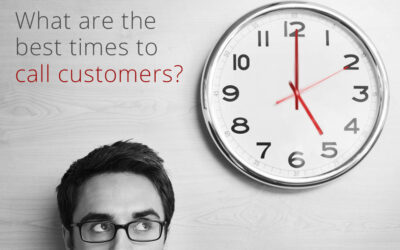What Are the Best Email Greetings?

Do you have the same problem as me? The problem of slow-onset anxiety when drafting an email and you aren’t sure what the best email greeting should be for your recipient.
Is “Hey” too relaxed, is “Dear” too formal, is “Morning!” too cheery (especially if it’s a Monday morning)?
If you don’t have that problem, teach me your ways.
If you do have that problem, you have come to the right place.
The greeting of an email, like your subject line, is extremely important. It’s one of the first things that your recipient reads, and it sets the tone for the rest of the email.
With over 6000 languages in the world, and different customs to match, greetings can come in many ways. They can range from formal to informal and personal to impersonal.
So, when approaching email salutations, how do we know which greeting is best?
The answer: know your audience, and if you don’t err on the side of caution.
Below you will find 7 of the best email greetings for whatever type of email you may be writing.
1. The Fail-Safe ”Hi, [Name],”
Direct, personal, and friendly, this greeting is a winner in nearly every context. If you need to dress it up for a more formal tone substitute “hello”, and if you want to dress it down for a more relaxed email substitute, “hey”. In our opinion, this is the best email greeting you can use. Some research indicates this is the best greeting you can use on an email to increase read-through rates.
Pro-tip: If you use ClientTether’s email automation system, you can generate personalized emails from a single template that can pull in name and most other fields from our CRM to truly personalize your email.
2. The Traditional “Dear [Name],”
If you have never received some type of correspondence that began with “Dear [Name]”, what rock have you been living under? This greeting is very formal, traditional, and some may argue that it’s going extinct. Jokes aside, this salutation has been around since the 15th century, meaning it’s tried and true. Yet, it’s appropriate for formal emails. So, use it when addressing a person in a position of respect, or if you are marketing to an older generation (60+).
This is one to avoid, however, if you are primarily focused on B2C emails and targeting a younger generation. Unfortunately, loads of spammers and scammers love this salutation, so consider carefully your audience before you use it.
3. The Time Specific “Good Morning/Afternoon [Name]”,
The beauty of this salutation is that it’s an extremely personalized salutation. Not only does it have their name, but it’s referencing the recipient’s time of day, which makes it feel a little less like an automated message.
Pro-tip: When using ClientTether you can schedule a time for your email to be sent, then a greeting like this can be particularly relevant. This is great if you have clients in different time-zones and you don’t want to wake up at 5am to get an email to them by 9am their time.
4. The Funny Greeting “I know you wanted another email from me, [Name] :)”
Know. Your. Audience.
When marketing to a younger crowd, and if your company brand/image is loose and fun, this can be a great way to lighten up your email salutation. People under 30 live and breath emojis, so while we can’t advocate using them in many situations, if you feel it will resonate with your audience, give it a try.
Humor tends to help readers relax a bit before they dive into the content of your email, so if you feel it aligns well with your audience and image, give it a try.
We have a client that has a hysterical email she sends to people about being eaten by an alligator. You might be surprised how your clients would react to you lightening up a bit.
5. The Keep It Simple – “[First Name],”
This is a straightforward, easy way to address someone in an email. It’s not too formal, and it’s not as casual as “Hey, [First Name]”. It’s not quite the Goldilocks answer you might be looking for, though.
The older or the more important or sophisticated the recipient is, this can be a bit of a turn-off.
Personally, I like this greeting quite a bit, but again, make sure you’re anticipating your audience reaction to this greeting before you use it.
6. The Context-specific – “Thanks for coming to our [event], [First Name]!”
If they were indeed at your event, this coupled with a good subject line will likely engage your audience.
Events, product purchases, online review, or other engagements create great opportunities to communicate with your clients or prospects to enrich their experience with your company.
We recommend taking advantage of these touch points with one word of advice…always provide some value in your message. Whether that’s a tracking link to a package or an update about something your audience will actually care about, make sure that if you were them, you’d say, “Oh sweet…I got another email from [your company name]” if you saw that email in your inbox.
If that wouldn’t be your reaction, rethink sending that email in the first place.
7. The Generic, “Hi There.”
If, for whatever reason, you don’t know the person you are sending your email to this generic greeting works to make a friendly and all-inclusive greeting. However, if you don’t have at least a first name, I’d question the value of sending an email in the first place.
We highly recommend doing research about who you are sending your email to and making sure you comply with all laws with respect to anti-spam practices.
Remember, personalization is key to open, click-through, and content engagement!
I hope the next time you are writing an email, you can write your salutation with confidence using some of these recommendations.
Just remember to keep your audience in mind. In your search for the best email greeting, remember that while the traditional salutation may work great for the baby boomer generation, it probably won’t work for millennials or gen Z.
The ultimate goal is to strengthen client relationships and create engagement with your email content, so always find ways to provide value to your audience with your communications.
Do you have your own Fail-Safe email greeting that wasn’t on the list above? If so, please share it. We’d love to know what works for you.
Related articles
The Top Franchise Events You Should Attend in 2024
Whether you are a franchisor looking for new best practices, technology, and peer-to-peer networking, a franchise owner looking for new opportunities, or a franchise supplier looking for new prospective clients, franchise industry events are an invaluable resource to...
Unlocking Success with ClientTether
The Digital Touch Franchise businesses face unique challenges when it comes to managing leads and customer relationships. Because modern buyers increasingly prefer to engage in digital channels, effective digital communication is key - and the bottleneck to creating...
What Are the Best Times to Call Customers? – 4 Rules
Professor James Oldroyd of MIT helped lead a survey and study with Inside Sales. The purpose of these studies was to unearth statistical data about the correlation between timing of calling to web leads to the success of contacting and converting these leads. The...
Maximizing Lead Response Time
In today's fast-paced business landscape, responding to leads promptly is essential for franchise owners seeking to convert potential customers into loyal patrons. However, achieving optimal lead response time can be challenging due to various factors. Fortunately,...
Wanna Look Like a Rockstar? [The Maids Success Story]
Wanna Look Like a Rockstar? [The Maids Success Story]Every franchisor aims to give the best products and services to their franchisees, especially in their marketing and sales. Ideally, franchise systems seek to improve franchisee business, allow them to work a little...
Sales Automation – Can It Be Done?
Yes, it most definitely can! Though most sales and marketing leaders do not know how or do not have access to the tools they need to facilitate it, sales automation can be achieved. It can seem daunting to automate all or some of your sales processes, but imagine...





![Wanna Look Like a Rockstar? [The Maids Success Story]](https://clienttether.com/wp-content/uploads/2024/01/62ffafc08e710758118b8171_adobestock_32265159-1080x675-1-400x250.jpg)
